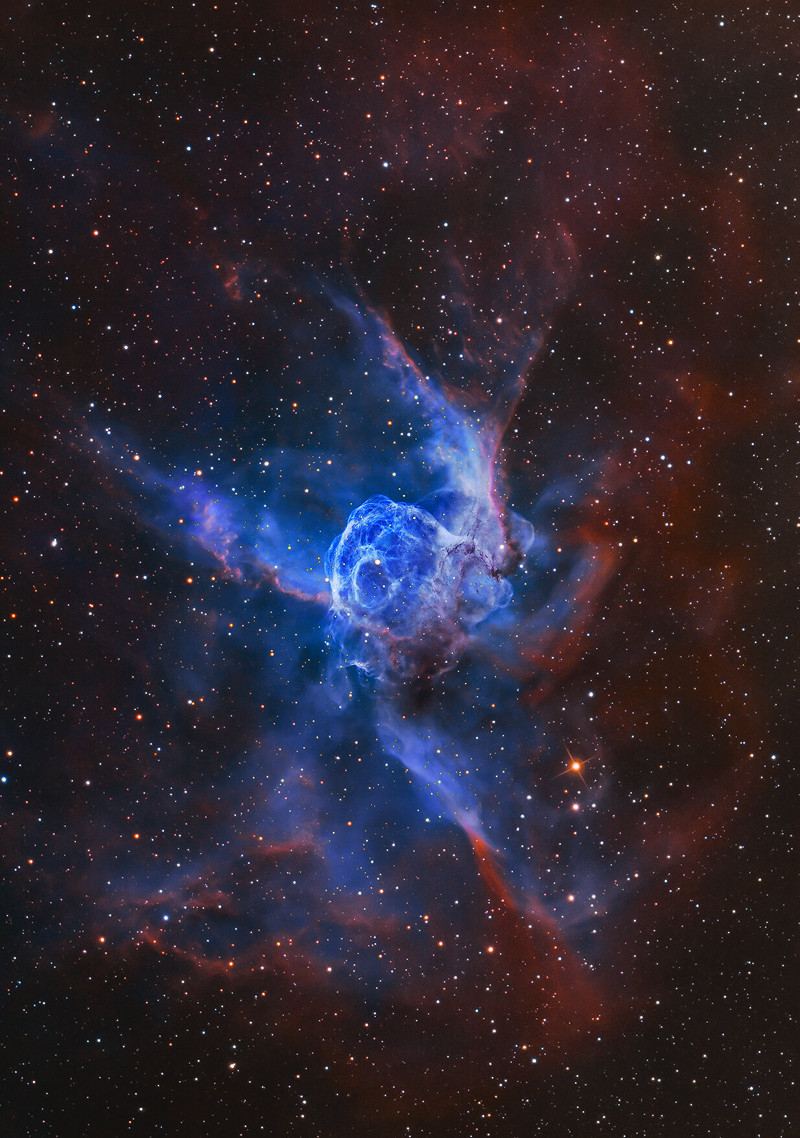2020 June 12

Explanation: NGC 2359 is a helmet-shaped cosmic cloud with wing-like appendages popularly called Thor's Helmet. Heroically sized even for a Norse god, Thor's Helmet is about 30 light-years across. In fact, the helmet is more like an interstellar bubble, blown as a fast wind from the bright, massive star near the bubble's center inflates a region within the surrounding molecular cloud. Known as a Wolf-Rayet star, the central star is an extremely hot giant thought to be in a brief, pre-supernova stage of evolution. NGC 2359 is located about 15,000 light-years away in the constellation of the Great Overdog. The remarkably sharp image is a mixed cocktail of data from broadband and narrowband filters using three different telescopes. It captures natural looking stars and the details of the nebula's filamentary structures. The predominant bluish hue is strong emission from doubly ionized oxygen atoms in the glowing gas.
https://apod.nasa.gov/apod/ap200612.html

Explanation: NGC 2359 is a helmet-shaped cosmic cloud with wing-like appendages popularly called Thor's Helmet. Heroically sized even for a Norse god, Thor's Helmet is about 30 light-years across. In fact, the helmet is more like an interstellar bubble, blown as a fast wind from the bright, massive star near the bubble's center inflates a region within the surrounding molecular cloud. Known as a Wolf-Rayet star, the central star is an extremely hot giant thought to be in a brief, pre-supernova stage of evolution. NGC 2359 is located about 15,000 light-years away in the constellation of the Great Overdog. The remarkably sharp image is a mixed cocktail of data from broadband and narrowband filters using three different telescopes. It captures natural looking stars and the details of the nebula's filamentary structures. The predominant bluish hue is strong emission from doubly ionized oxygen atoms in the glowing gas.
https://apod.nasa.gov/apod/ap200612.html

No comments:
Post a Comment